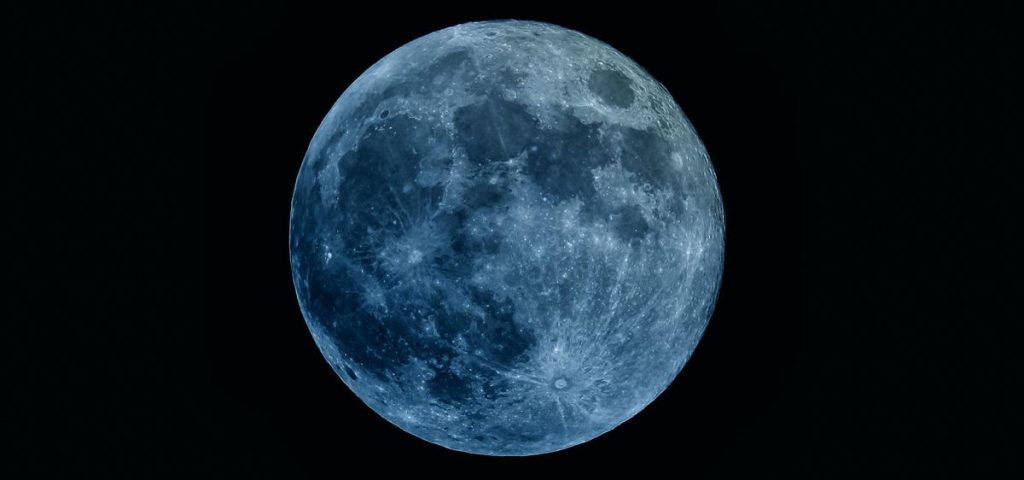A “Blue Moon” is coming. The final full moon of summer in the northern hemisphere—which will rise on Wednesday, August 30, 2023—will also be the year’s biggest, brightest and best supermoon.
No, it’s not going to be blue. The name comes from the fact that this month there are two full moons, which leaves the second one without a name.
Just gone was the “Super Sturgeon Moon,” which rose with its Earth-facing side 100% illuminated by the sun. Next comes a “Super Blue Moon,” which is also called a “Fruit Moon.”
Here’s everything you need to know about this week’s odd-sounding full moon:
Why a ‘Blue Moon’ Occurs
What is a “Blue Moon?” The second full Moon in a calendar month that contains two full Moons is termed a “monthly Blue Moon,” as in the saying “once in a Blue Moon.” However, it’s also a consequence of an extra 13th full moon in a year. That’s bound to happen occasionally because the moon takes 29.53 days (one “moon-th) to orbit the Earth and a solar year is 11 days longer than a lunar year.
A solar year is, of course, 365 days, 5 hours, 48 minutes and 45 seconds. A lunar year—the time it takes for the moon to orbit Earth 12 times is 354 days, 8 hours, 48 minutes, 34 seconds. That’s the time it takes for 12 lunations—a cycle of 12 orbits of the Moon around the Earth, with each taking 29.53 days. Let’s do the math: 12 x 29.53=354.36 days—a lunar year.
Do the math and it becomes apparent that every 2.7 years, on average, there’s going to be a 13th full moon in our (solar) calendar year. For that to occur 2023’s first full moon must rise during the first 11 days of the year. That’s exactly what happened this year when January’s “Wolf Moon” rose on January 6.
Enter the ‘Fruit Moon’
When a full moon occurs in late August or early September it’s often known as the “Fruit Moon,” according to Space.com. That’s because it’s the time of year when apples, plums, peaches, grapes and berries are at their ripest.
However, more unusual is the use of the term “super,” which this month has some proper science behind it.
The moon’s orbit around Earth is elliptical, not circular. This means that the moon’s distance from Earth varies throughout its orbit. The moon is closest to Earth at perigee and farthest at apogee.
Explaining the ‘Supermoon’
A supermoon is a full moon that coincides with its perigee and will be about 14% larger and 30% brighter than when it is at apogee. Technically it will appear larger and brighter than a regular full moon, though the latter is the most noticeable.
A supermoon is generally considered to be a full moon that occurs within 90% of the moon’s closest approach to Earth in a given orbit, but that definition gives us four “supermoons” in 2023—though this “Blue Moon” is the biggest.
When To See the ‘Blue Supermoon’ at its Best
The best time to see the full “Blue Moon” depends on the separation between the exact time of sunset and the exact time of moonrise. Ideally, the latter should occur just after the former, which creates the spectacle of a full moon appearing in a still-lit dusk sky.
That works out to be moonrise on two successive evenings—Wednesday, August 30 and Thursday, August 31. Check out the moonrise time where you are and be in a location where you can see low down to the eastern horizon.
Your reward will be a sight of the year’s biggest, brightest and best full moon.
Wishing you clear skies and wide eyes.
Read the full article here










